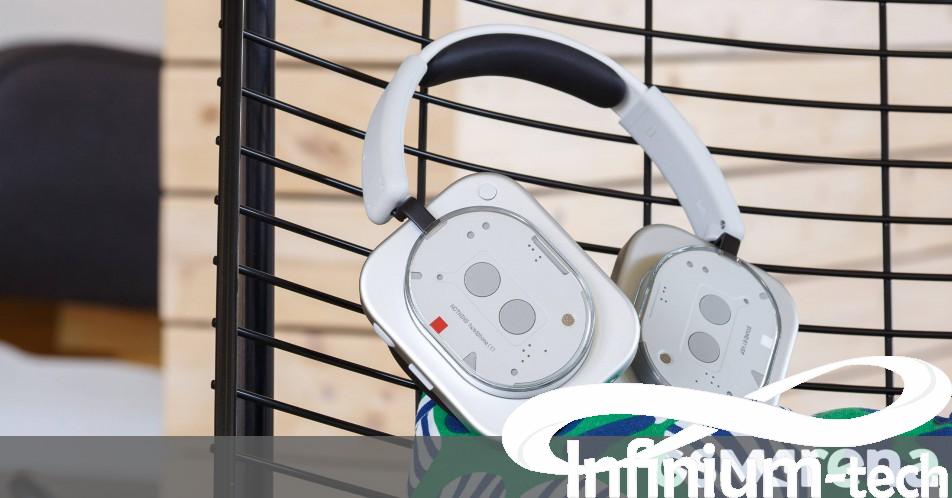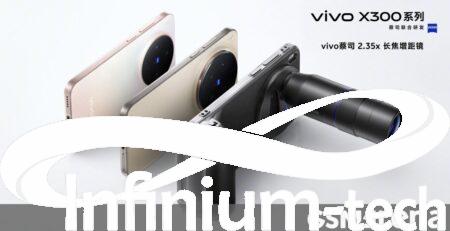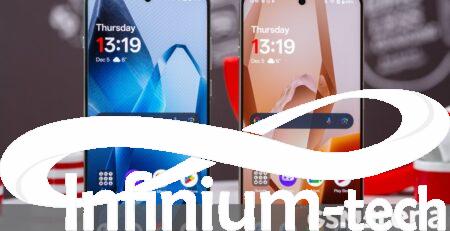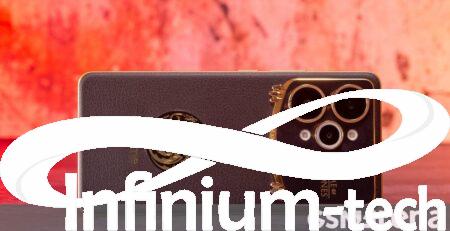Nothing Headphone (1) review – GSMArena.com news | Infinium-tech
Introduction
It started with a couple of smartphones a few years ago. Now, nothing is a wide range of products, including headphones. In fact, the earbuds lineups of nothing have gained impressive popularity, and also have fans in its office.

And after some TWS earbuds, the company is entering the premium over-year area with anything headphones (1). The company wants to challenge the Titans with the choice of Bose, Sony, Apple and Senhaizer.
Headphones (1) are bringing premium features with an aggressive price tag, which you should think twice before defaulting for more installed brands. The design is very polarized, but no one denys that it is negotiating.
Out of the box
Nothing comes in the headphone (1) a huge white box, which contains a very good soft shell case, USB-C cable and 3.5 mm to 3.5 mm audio cable that you can use when the battery is out of the battery.

The case is a good touch and is made very well, but it easily collects dust and hair from your pets.
Design and comfort
One of the centerpiece features of the headphone (1) is a retro design. Why retro? Because ear cups mimic old cassette tape. And the stand-out may not be universally liked design is a large part of DNA of nothing.

The available colors are white and black and we have the first for this review.
The build quality is excellent. It uses material for ear pads – metal, plastic and impure leather mixture. In any case, they feel strong and smooth. Maybe even a little bit tight.

One of our major complaints is the weight of headphones (1). The pair suggests a scale of 329 grams, which is about 80 grams more than the competitive solutions of Bose and Sony. In addition, Bose Qi Ultra is slightly longer and broad, but quite thin. The weight difference is not so important at the first time, but in the end it can be felt after wearing a headphone for hours, although.
Additionally, the headband on the headphone (1) does not feel slightly tight for my taste. Even if I completely loosen the headband, it holds my head with a little enthusiastic, which combines the feeling of upheaval after one hour of music streaming.

We have another minor issue portability with headphones. Rivities such as Sony WH-1000XM6 and Bose Catelcomfort Ultra twisted their ear cups to fit in a small case, so they do not take too much space in your backpacks at airports, for example, at airports. Despite being perfect, the headphone (1) the case almost fills my backpack on its own.
Control
Nothing is one of the best things about the headphones of nothing. The company is going against the current with this approach because most brands prefer to use touch control on the ear cup, which makes space for Mistch, especially during some activities.
With headphones (1), you get real physical buttons. They are all located on the right. Back, you have a volume scroller, which does not provide any touch reaction and feels more like a free-scroll on the mouse, and also serves as a button for play/poses. Under the scroller, you get a physical paddle that is used on the next track or to play the previous one. It is also used to reply to the coming calls and to reject. Catching the paddle on the right or left rapidly or rewinds the track.

You will find a USB-C port and 3.5 mm audio jack, below/closed switch next to.
And then there is a devoted virtual assistant button on the year cup. The headphones provide integration with Google auxiliary and Siri.
Overall, the controls are great, but a touch reaction on the roller would have been improved them. For example, I accidentally returned the volume to scratch my neck. The roller is still very sensitive. I also feel that it would be more convenient to position them forward.
Software and features
Headphones (1) Nothing on Android and iOS to give you more adaptation options works with X Saathi App. The app with a user-friendly interface is quite straight and de-critical in itself.
You have found noise cancellation control at the top with low, middle, high and adaptive mode. We recommend high mode for best possible experience. You can also use transparency mode, which increases the ambient sound, and it can be useful when it comes through heavy traffic on a bike or scooter. Of course, you can close the neck completely.
Since headphones also support spatial audio, you can set it to decide or follow your head movements through head tracking mode.
And then there are bass enhancement and equalizer settings. The first is a very self-distinct, while the equipment gives you granulated control over sound tuning. The simple tab provides a bunch of the preset, and you can also set a custom yourself. On the other hand, advanced tabs, power users and audiofiles will be greatly appreciated because it gives you more accurate tuning for each frequency, and you can save different sound profiles.
Control sub-menu grant reaches you some controls. For example, the dedicated digital auxiliary button can be obtained as per your choice.
Other notable features and settings include low lag mode, which is useful when gaming, the ability to switch between AAC and LDAC audio codes, over-ear detections (preventing audio) and dual connections, which allows you to connect to two devices together. Let’s call your laptop and your smartphone.
Display
audio quality
Nothing headphones (1) rely on two large 40mm dynamic sound drivers, which are fine in collaboration with the British audio company KEF.
Now, I must say that sound tuning is largely subjective. Some people find bass-ivory sounds attractive, especially if they are hearing hip-hop or electronic music more often. However, I like the more balanced sound. Therefore, I find it difficult to give these phones an excellent score because bass can sometimes dominate the vocals and mids.

The default tuning of the headphone (1) is a little bit of bass for my taste. Even with the sound tuning options provided, you can feel powerful bass. Promoting the trebal, rejecting the bass a notch, and adding a little middle frequencies to the equalizer menu helps to bring more vocals and MIDS.

Said, the overall sound quality is still very good. In addition, I think it can easily be headed with Bose QC Ultra, Sony WH-1000xm6 and Apple’s AirPods Max. People who like soft, warm-shingling tuning will definitely enjoy anything headphones.
To watch movies and videos, however, I recommend to reduce the bass significantly, otherwise voices make the sound of bounce.
Microphone and call quality
The headphone (1) is equipped with a total of 6 microphones, 3 on each side. However, only 4 of those MICS for headphone calls are used.
Unfortunately, it is one of the biggest downsides of this headphone pair. The quality of the call is not for sniffing. I received frequent complaints about the quality of the call at the other end, even in a quiet environment. So if you are planning to use those people for a lot of frequent calls, then you want to see elsewhere.
noise cancellation
Unlike our audio quality experience, the performance of the noise is probably the best I have tried. Nothing advertise the depth of 42 dB and up to the frequency range of 2000 Hz. But no matter how good it is to cancel your active noise, if the passive neck is not good, the performance deteriorates.

Thankfully, both of them did not find anything. Inactive isolation is very good, you will not need to cancel the maximum noise in the miller noise environment. Taking on ANC excludes the most noise. They are perfect for coming to the city or traveling by plane.
ANC-wise, headphones (1) are definitely best.
battery life
Anything is not one of the manufacturers who openly reveal the battery capacity of their headphone. The headphone (1) provides an impressive 1,040 mAh cell that takes up to two hours to fully charge. However, fast charging capabilities are not bad. You get about 2.4 hours of audio playback with ANC for just 5 minutes on the charger.

According to nothing, the headphone (1) can keep you with ANC and for 80 hours without ANC. But it is with AAC audio codec. Switching on LDAC reduces the runtimes to 30 and 54 hours respectively.
My experience shows that these numbers are more or less accurate. In AAC mode, the pair comfortably reached a 35-hour mark with ANC, while LDAC reduced the runtime for a few hours.
No matter whether ANC is on or closed, the headphone (1) provides solid battery life. Better than competitive solutions than Bose and Apple.
conclusion
Nothing is the headphone (1) sports team’s talented child who has just started, but it is good like everyone. Nothing did nothing on the first attempt. The company’s first over-ear headphones are successful.

Certainly, they are rather heavy, not the most portable pair out of there, and on the voice call quality sub -subdivision, but they easily match the best in the industry in terms of sound quality, noise cancellation and quality of construction. The polarization design grew on me, and I loved hardware control, which are very unique for headphones (1). To not mention, the solution of nothing is much cheaper than the rest. Their price is € 300 in Europe and $ 300 in the US, which is reducing mass headphones such as Bose QC Ultra and Airpods Max.
So don’t I recommend anything headphones (1)? Yes, they are easy to recommend, especially for people looking to buy over-ear with premium features and hot, stale sounds.

























Leave a Reply